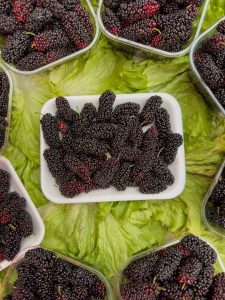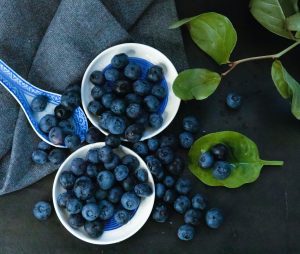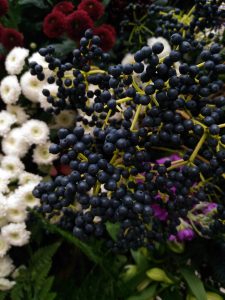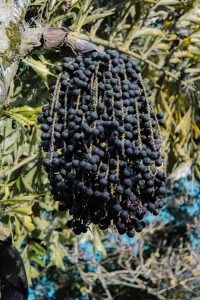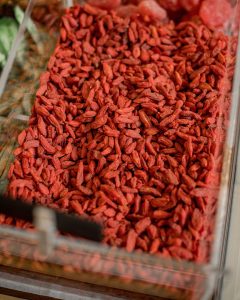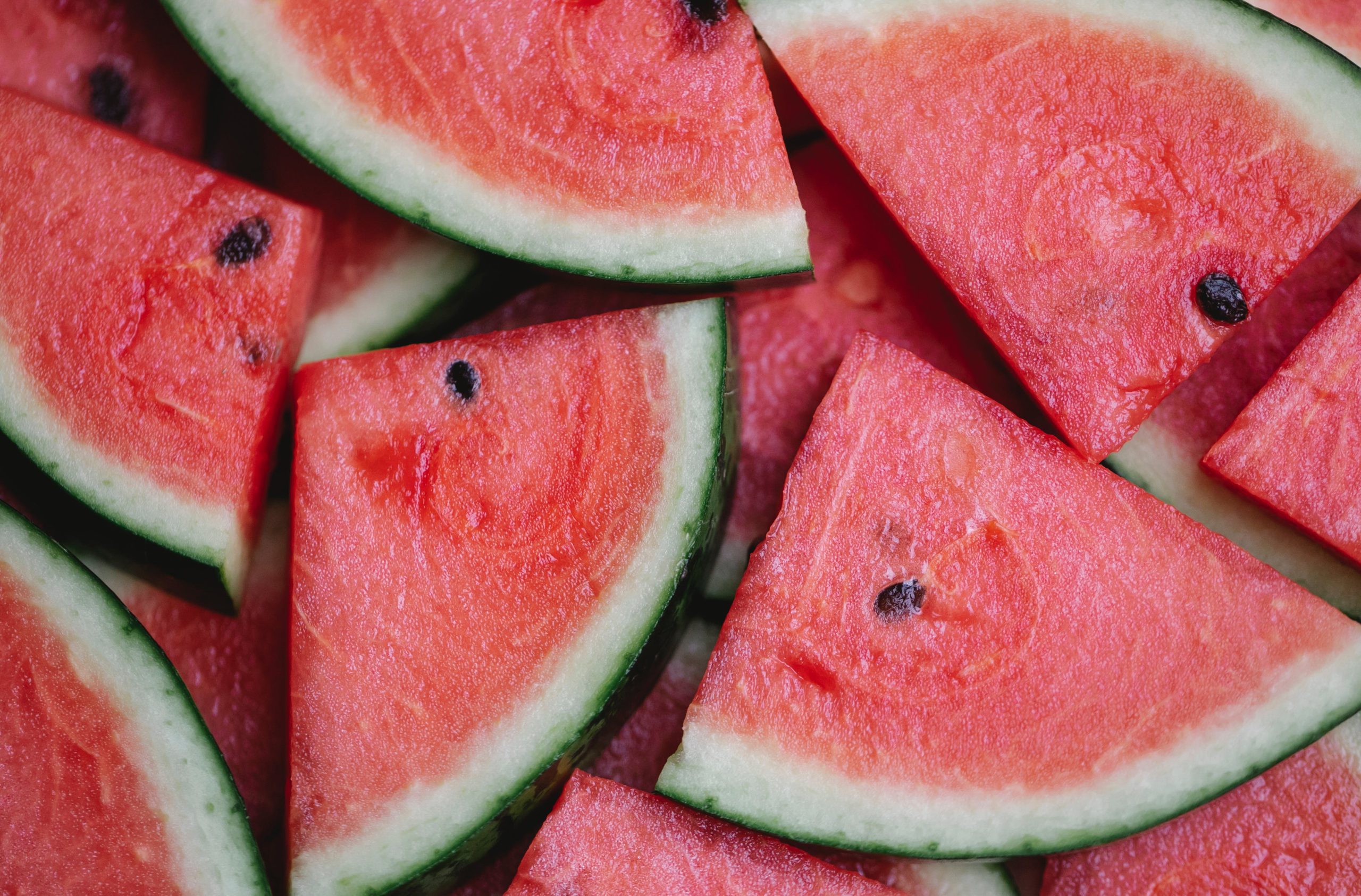
What Is a Watermelon?
A watermelon is a large, refreshing fruit known for its vibrant green rind, juicy red or pink flesh, and black seeds (or seedless varieties). Scientifically classified as Citrullus lanatus, it belongs to the Cucurbitaceae family, which also includes cucumbers and pumpkins. This summer favorite is composed mainly of water, accounting for its hydrating and thirst-quenching qualities.
The sweet, crisp texture of watermelon is attributed to its high water content, typically around 90%. The flesh also contains natural sugars, primarily fructose, making it a naturally sweet and low-calorie treat. While the most common type has a red interior speckled with black seeds, seedless varieties have become increasingly popular.
Watermelons are not only delicious but also nutritious, offering essential vitamins like vitamin C and A, along with antioxidants like lycopene. Often enjoyed fresh as slices, in salads, or blended into refreshing beverages, watermelons are a quintessential part of summertime indulgence.
Why Do We Eat Watermelons?
We eat watermelons for a variety of reasons, primarily driven by their refreshing taste, hydrating properties, and nutritional benefits:
- Hydration:
- Watermelons are composed of approximately 90% water, making them an excellent choice for staying hydrated, especially during hot weather.
- Natural Sweetness:
- The natural sugars, primarily fructose, give watermelons a deliciously sweet flavor without the need for added sugars. This makes them a satisfying and healthier alternative for those with a sweet tooth.
- Vitamins and Antioxidants:
- Watermelons are rich in essential vitamins, including vitamin C and A. They also contain antioxidants like lycopene, which is associated with various health benefits, including heart health.
- Low in Calories:
- Watermelons are relatively low in calories, making them a guilt-free and nutritious snack option for those watching their calorie intake.
- Cooling Effect:
- The high water content and juiciness of watermelons provide a cooling sensation, making them particularly enjoyable during warm weather. The fruit’s natural refreshing quality is often associated with summertime.
- Versatility:
- Watermelons are versatile and can be consumed in various forms, such as sliced, cubed, juiced, or blended into smoothies. They are also used in salads, salsas, and desserts, showcasing their culinary adaptability.
- Social and Cultural Traditions:
- Watermelon consumption is often associated with social gatherings, picnics, and barbecues, adding to its appeal as a festive and communal food.
In summary, the consumption of watermelons is driven by their delicious taste, hydrating nature, nutritional content, and versatility, making them a popular and enjoyable fruit, particularly during warmer seasons.
When Do We Eat Watermelons?
Watermelons are enjoyed in various settings and can be consumed at different times, often depending on personal preferences and cultural traditions. Here are some common occasions when people tend to eat watermelons:
- Summer Picnics:
- Watermelons are a quintessential part of summer picnics and outdoor gatherings. Their refreshing nature and high water content make them a popular choice for staying cool during warm weather.
- Barbecues and Cookouts:
- Watermelons complement the casual and festive atmosphere of barbecues and cookouts. Sliced watermelon is often a refreshing addition to the spread.
- Beach Days:
- Watermelon’s hydrating qualities make it an ideal fruit for beach outings. Many people enjoy chilled watermelon slices as a beach snack.
- Festivals and Celebrations:
- Watermelons are often associated with summer festivals and celebrations. Their sweet and juicy nature adds to the festive mood.
- After Exercise or Physical Activity:
- Due to their high water content and natural sugars, watermelons can be a refreshing and energizing snack after exercise or physical activity.
- Family Gatherings:
- Watermelons are frequently included in family gatherings and reunions, providing a delicious and hydrating treat for all age groups.
- Outdoor Events:
- Whether at sporting events, concerts, or outdoor markets, watermelons are a popular choice for a convenient and refreshing snack.
- Breakfast or Brunch:
- Watermelons can be part of a refreshing and hydrating breakfast or brunch, either on their own or as an ingredient in fruit salads or smoothies.
- Anytime as a Snack:
- Watermelons are versatile and can be enjoyed as a snack at any time of the day. Sliced or cubed watermelon is a quick and nutritious option for a satisfying snack.
Ultimately, the consumption of watermelons is flexible, and people incorporate them into their diets based on personal preferences, seasonal availability, and the occasion at hand.
Ingredients of Watermelons
The composition of watermelons is relatively simple, primarily consisting of water, natural sugars, and some essential nutrients. Here are the main components:
- Water:
- Watermelons are composed of about 90% water, giving them their hydrating and refreshing qualities.
- Natural Sugars:
- Watermelons contain natural sugars, with fructose being the primary sweetener. This imparts a sweet and juicy flavor to the fruit.
- Vitamins and Minerals:
- Watermelons provide essential vitamins such as vitamin C and vitamin A. They also contain minerals like potassium.
- Lycopene:
- Watermelons are a good source of lycopene, a carotenoid antioxidant responsible for the fruit’s red or pink color. Lycopene is known for its potential health benefits.
- Dietary Fiber:
- While watermelons are not particularly high in fiber, they do contribute some dietary fiber, which aids in digestion.
- Citric Acid:
- Watermelons may contain a small amount of citric acid, contributing to their overall taste profile.
It’s worth noting that the nutritional content can vary slightly depending on the specific variety of watermelon. Additionally, seedless watermelons, a popular type, have been bred to contain fewer or no seeds, making them more convenient to eat. Overall, the simplicity and high water content make watermelons a hydrating and nutritious addition to a balanced diet, particularly during hot weather.
Types of Watermelons
There are numerous varieties of watermelons, each with its own unique characteristics in terms of flavor, texture, and appearance. Here are some common types of watermelons:
- Sugar Baby:
- Known for its smaller size and dark green rind, the Sugar Baby watermelon has sweet, red flesh. It’s a popular choice for small households.
- Crimson Sweet:
- This variety is recognized by its vibrant green-striped rind and sweet, crisp, red flesh. Crimson Sweet watermelons are a common choice for their refreshing taste.
- Seedless Watermelons:
- Seedless watermelons are bred to contain fewer or no seeds, making them more convenient to eat. Popular seedless varieties include the Mini Seedless and the Yellow Doll.
- Yellow Crimson Watermelon:
- With a yellow rind and sweet, yellow flesh, this variety provides a unique twist on the classic red watermelon.
- Orangeglo:
- As the name suggests, the Orangeglo watermelon has a bright orange interior. It has a sweet and tropical flavor, making it a favorite among those looking for a distinctive taste.
- Charleston Gray:
- Known for its large size and oblong shape, the Charleston Gray watermelon has a pale green rind and sweet, pink to red flesh.
- Moon and Stars:
- This heirloom variety is named for its dark green rind speckled with small yellow dots, resembling stars. The flesh can be red or yellow, and it has a sweet taste.
- Yellow Doll:
- A small, seedless watermelon with a yellow rind and sweet, crisp, yellow to orange flesh. It’s prized for its compact size and sweetness.
- Icebox:
- Icebox watermelons are small and compact, making them ideal for fitting into refrigerators. They often have a thin rind and sweet red or pink flesh.
- All Sweet:
- As the name suggests, the All Sweet watermelon is known for its consistently sweet taste. It has a medium-green rind and sweet, red flesh.
These are just a few examples of the many watermelon varieties available. The specific types may vary by region and seasonal availability. Choosing a watermelon often involves considering factors such as size, sweetness, and personal taste preferences.
Signs of Ripe, Signs of Raw and Signs of Rotten Watermelons
Signs of Ripe Watermelons:
- Uniform Color:
- A ripe watermelon typically has a uniform, matte appearance. Look for a consistent color without overly shiny or dull spots.
- Yellow Spot:
- On a watermelon resting on the ground, there should be a creamy yellow spot (known as the ground spot) where it sat and ripened in the sun.
- Dull Thud Sound:
- When tapped, a ripe watermelon produces a dull thud sound rather than a high-pitched or hollow sound. This can indicate that the fruit is full of water and at its peak ripeness.
- Webbing:
- Web-like brown lines, known as webbing, on the rind are a sign of pollination and are often associated with sweeter watermelons.
- Symmetrical Shape:
- A symmetrical shape without irregular bumps or dents is a characteristic of a well-developed and ripe watermelon.
Signs of Raw or Unripe Watermelons:
- Shiny Appearance:
- If the watermelon has a shiny or overly glossy appearance, it may be underripe. Ripe watermelons usually have a more matte finish.
- Green Color:
- An underripe watermelon tends to have a greenish tint rather than the deep green associated with ripeness.
- Hollow Sound:
- When tapped, an unripe watermelon produces a higher-pitched or hollow sound, indicating it may lack the desired juiciness.
- White or Pale Green Ground Spot:
- A white or pale green ground spot can indicate that the watermelon is not fully ripe.
- Irregular Shape:
- Watermelons that are still developing may have irregular bumps, uneven shape, or flat sides.
Signs of Rotten Watermelons:
- Soft or Mushy Texture:
- A watermelon that feels excessively soft or mushy to the touch is likely overripe and starting to spoil.
- Visible Mold:
- Mold, either on the surface or within the flesh, is a clear sign of spoilage.
- Foul Odor:
- Rotten watermelons emit a foul or fermented odor. A disagreeable smell indicates that the fruit is past its prime.
- Visible Discoloration:
- Dark or off-color patches on the rind or flesh can indicate rotting or deterioration.
- Leaking Liquid:
- If you notice any liquid oozing from the watermelon, it may be a sign of internal breakdown and spoilage.
Checking these signs will help you select a ripe and flavorful watermelon for optimal enjoyment.
Summary
In summary, selecting the perfect watermelon involves paying attention to various indicators. A ripe watermelon should have a uniform color, a creamy yellow ground spot, a dull thud sound when tapped, webbing on the rind, and a symmetrical shape.
On the other hand, underripe watermelons may appear shiny, have a greenish tint, produce a hollow sound, exhibit a white or pale green ground spot, and have irregular shapes. Signs of a rotten watermelon include a soft or mushy texture, visible mold, a foul odor, discoloration, and leaking liquid.
Mastering these cues allows individuals to choose watermelons at their peak ripeness for the most satisfying and flavorful experience.

